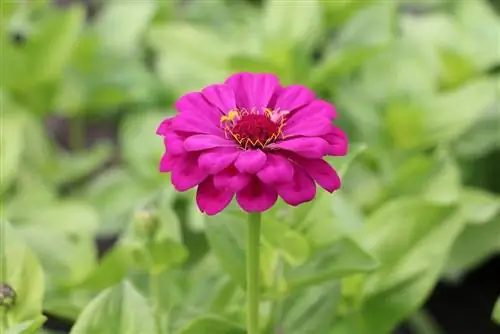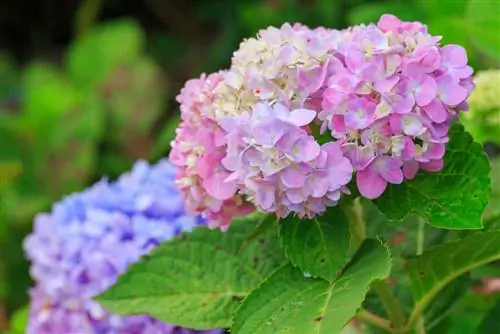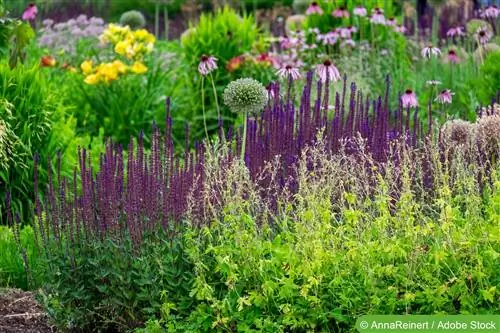- Author admin [email protected].
- Public 2023-12-17 03:39.
- Last modified 2025-01-24 12:45.
There are a number of different Zinnia varieties that differ significantly from one another in terms of growth habit and appearance. New varieties of ornamental zinnia have been bred in European nurseries since the 19th century. This sometimes comes with simple flowers, sometimes with densely filled flowers, the color of the petals ranges from white to yellow to different shades of red.
Special features
- Zinnias require very little care, but enough moisture during the summer season to develop the strongest possible stem.
- If sowed in March, the blooming period of the colorful summer flower extends from the beginning of July to the end of October.
- Since the zinnia is extremely sensitive to frost, the plant can only be overwintered in warm places, which suggests planting in pots.
- Zinnias are normally sown again every spring in the desired location in the garden.
Care
Zinnias are heat-loving plants and require sunny, protected locations to thrive. The soil should have good permeability and sufficient substrate. Garden compost or soil enriched with stable manure are ideal for this. The best location for your own garden is exposed flower beds or borders. Vegetable beds also offer a possible place for the zinnia, as tomato plants particularly benefit here. The positive property of the zinnia is its defense against nematodes, which often target the roots of tomato plants.
You can start growing the zinnia seeds that are available everywhere in specialist stores as early as February. To do this, place a maximum of three seeds in a low planter, 3 mm deep, covered with potting soil and placed in a warm place in the house. The germination period is usually 10 to 12 days. From mid-May, the early plants can then be planted outdoors. You can also sow seeds directly outdoors from this point onwards. It should be noted that zinnias should best be sown in rows about 30 cm apart at a depth of 3 cm.
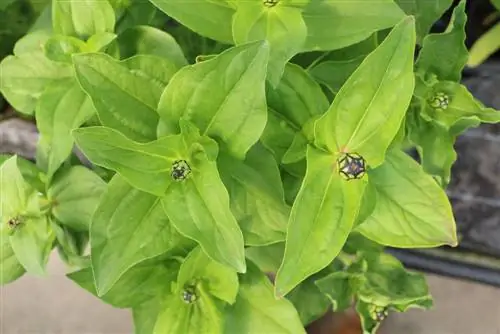
For flower lovers who want to quickly enrich their garden with zinnias, they can look for young plants at weekly or garden markets from the end of May. As soon as frost-free nights begin, zinnias are ready to be planted in the garden. You should maintain a distance of around 25 cm between the individual plants. A sunny, wind-protected and nutrient-rich location is ideal; the soil should never dry out. To ensure that the plants bloom all summer long, regularly cut off the wilted parts, as this stimulates bud formation and allows the plant to branch.
Flowering time
The flowering period extends from July to October. The flowers are quite large and reach a diameter of up to 5 cm, sometimes even larger. The zinnia has strong green leaves in a triangular shape.
Fertilization
The Zinnia also needs sufficient water and nutrients for its intense colors. Outdoor plants should therefore be supplied with a liquid fertilizer once a month. The use of long-term fertilizer is not recommended if the plant has a one-year lifespan. As a pot or balcony plant, the zinnia can receive regular fertilization once a week in the form of liquid fertilizer due to the space available. If the soil is rich in substrate as a planting base and was fertilized with compost the previous year, the addition of fertilizer is only necessary to a limited extent and depends on the needs of the zinnia.
Cutting and propagation
Zinnias grow in an upright, natural way. To achieve multiple flowering results, the end tips of the young plants are shortened to achieve a bushy growth with several flowers. Wilted and faded material should be removed at any time in order to achieve beautiful re-blooming. After flowering in autumn, the entire plant is removed from the soil and disposed of. If you want to propagate zinnia plants yourself, you can let the dead inflorescences dry on the stem and easily store the seeds in a dry and light-protected place for the coming year.
Diseases and pests
If the planting is too dense, powdery mildew can occasionally appear on the leaves. This can be recognized by its white and sticky coating. Powdery mildew can be easily treated by cutting affected areas or controlled with a fungicide. A sustainable, ecological application against mildew can be done with a spray of milk or whey; whey is mixed with water in a 1:1 or milk 1:5 ratio and applied.
What you should know in brief
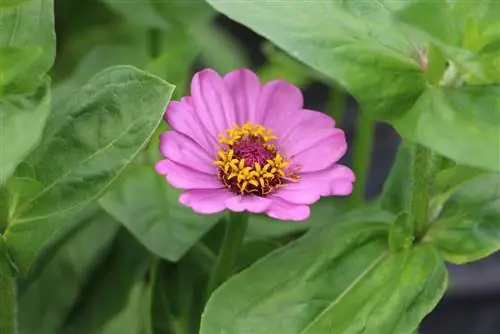
Zinnias are not only very popular for your own garden, but are also ideal as cut flowers. They are characterized above all by their easy care requirements and long-lasting blooms. They can also be easily combined with other perennials and grasses to give the garden that certain ambience. They bloom throughout the summer season in a wide variety of colors. Suitable for outdoor use as well as in a pot on the terrace or balcony. The positive properties of the plant, from easy sowing to possible overwintering, make the zinnia a colorful summer flower for hobby gardeners and flower lovers.
- The zinnia, known by its Latin name as Zinnia elegans Compositae, belongs to the daisy family.
- The plant originally comes from Mexico, but is now used as an annual plant in beds, balcony boxes and pots.
- A very beautiful picture is created with the combination of lavender and sage.
- There are a number of different varieties that differ primarily in their height.
- They can also be found in a wide variety of colors: from white to yellow to various shades of red.
- The flowering period extends from July to October. The flowers are quite large and reach a diameter of up to 5 cm.
- The foliage of the Zinnia is bright green and the leaves are lanceolate to ovate.
- Sowing can be done directly outdoors, but the soil must have warmed up beforehand. Pre-growing in pots and bowls is also possible.
- A temperature between 20 and 25 °C is optimal, then germination occurs after 10 to 24 days.
- A bright location is beneficial, if possible on the windowsill.
- You should get the young plants used to the outdoor conditions and plant them in the frost-free outdoor bed.
- When sowing directly, pricking out as soon as the seedlings are large enough.
- The Zinnia needs a sunny, warm and wind-protected location, as well as a well-drained soil.
- When transplanting, you should make sure that the sensitive roots are not injured.
Editor’s Tip
Zinnia flowers that have faded should be removed to ensure good, rich re-blooming. It is advisable to fertilize the plants regularly once a week and water them regularly. However, waterlogging must be avoided. The zinnia can be attacked by spider mites, snails and aphids. These animal pests must be combated early.

